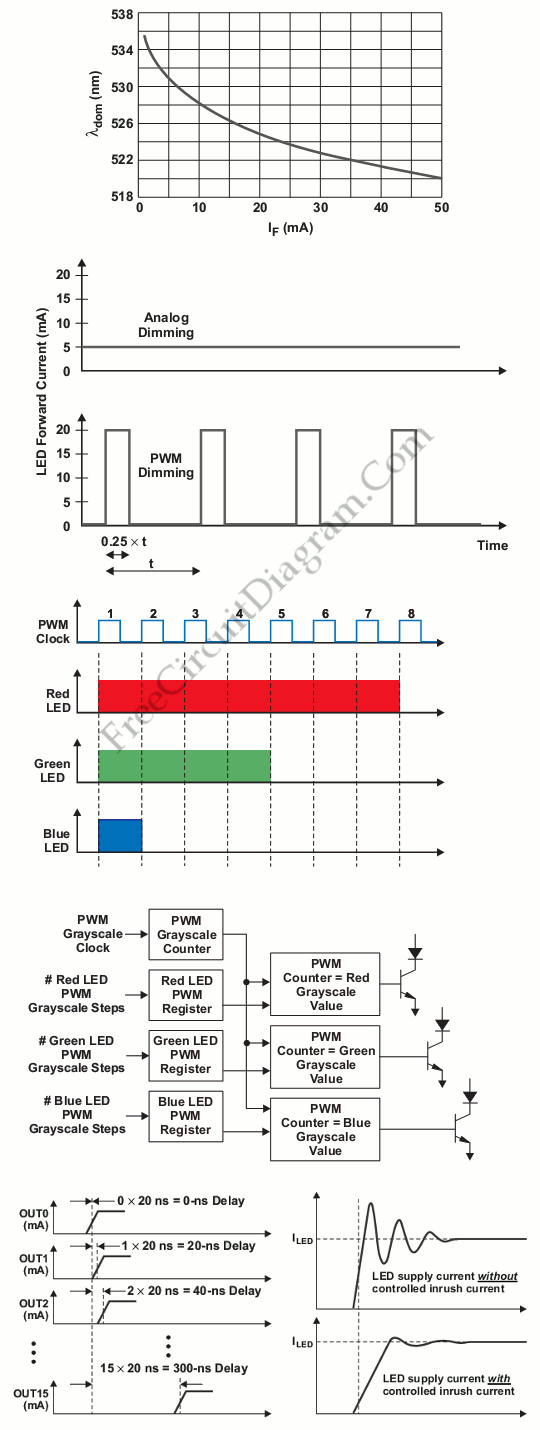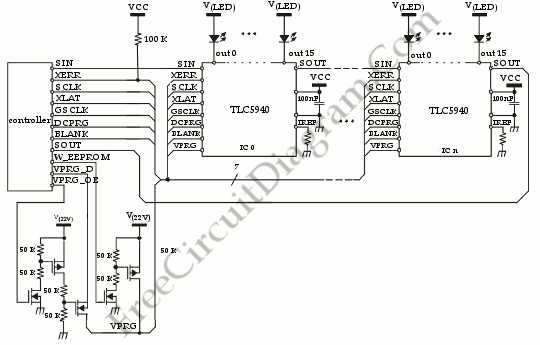PWM Dimming for LED RGB Video Displays

This is an application that can be used to adjust LED brightness while maintaining superior color quality. This application uses pulse width modulation (PWM) dimming technique. This application can be used for single-line scrolling displays, transportation road signs, simple scoreboards, ever-expanding advertising markets encompassing convenience gas stations, shops, stadiums, and stores. Following figures shows color shift caused by analog dimming, analog dimming vs. PWM dimming, orange pixel generated with 3-bit PWM dimming, and inrush current control :

The high-quality, full color video requires hundreds or thousand of brightness levels between 0% and 100%. To improve video quality, we can uses analog dimming by changing the LEDs forward current. It is simple but it shifts color spectrum that is unacceptable in displays that require a true color representation. To solve this problem we can use this application. It uses TLC5940 to improve video quality and enhanced color shading by adjust the brightness levels.
PWM dimming reduces brightness by modulating the LED’s forward current between 0% and 100%. It controls the LEDs brightness by adjusting the relative ratios of the off time and on time. The advantage of this technique are the forward current is always constant, and pulsing the current provides precise brightness control while preserving the color purity. But it also has disadvantage, it is the maximum number of discrete brightness level is limited.
For example, if we want to produce an orange pixel on the screen, we just program the grayscale value of the blue, green, and red LEDs to 1, 4, and 7 as shown in third picture. The colors that can be produced by TLC5940 12-bit PWM dimming are 68.7 billion colors. The fourth picture shows the comparison between LED supply current without controlled inrush current and LED supply current with controlled inrush current. Here is the circuit :

[Source: Texas Instruments – Analog Application Journal]